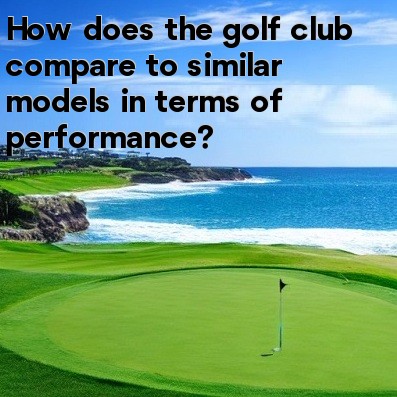
Introduction:
Golf clubs are essential equipment for golfers, and choosing the right club can greatly impact a player's performance on the course. When considering different golf clubs, it is important to compare them based on various performance factors to determine which one suits your game best. This article will discuss how golf clubs compare to similar models in terms of performance.
1. Distance:
The distance a golf club can achieve is a crucial aspect to consider. Some golf clubs, such as drivers, are designed to provide maximum distance off the tee. They typically have larger heads and longer shafts, allowing players to generate more clubhead speed and hit the ball farther. Other clubs like hybrids and irons offer balance between distance and control, making them suitable for approach shots to the green.
2. Accuracy:
While distance is important, accuracy is equally crucial in golf. Different golf clubs have varying degrees of forgiveness and precision. For example, game-improvement irons are designed to be more forgiving on off-center hits, helping golfers maintain accuracy even when they don't make perfect contact. On the other hand, blade-style irons provide better shot shaping capabilities for skilled players looking for maximum control.
3. Playability:
The playability of a golf club refers to how easy it is to hit different types of shots. Some clubs are more versatile than others, allowing players to execute a wide range of shots. For instance, wedges with different lofts enable players to hit high flop shots around the green or low punch shots under trees. Additionally, adjustable clubs, such as drivers with movable weights, offer golfers the ability to customize their ball flight and playability to suit their swing.
4. Feel and Feedback:
The feel and feedback of a golf club can greatly affect a player's performance and enjoyment. Different golf clubs provide different feedback on impact, giving golfers a sense of how well they struck the ball. Players may prefer clubs that offer a softer feel or more responsive feedback based on personal preferences. The balance and weight distribution of a club also contribute to the overall feel and control it provides.
5. Versatility:
Many golfers look for clubs that can be used in a variety of situations and course conditions. For example, a versatile fairway wood can be effective off both the tee and the fairway, offering players more options on the course. Additionally, adjustable clubs with interchangeable shafts or heads allow golfers to adapt their equipment to different game conditions, making them more versatile and adaptable.
Conclusion:
When comparing golf clubs, performance is a key factor to consider. Distance, accuracy, playability, feel and feedback, and versatility are all important aspects to evaluate. Ultimately, the ideal golf club will depend on personal preferences, playing style, and skill level. Trying out different clubs and seeking professional advice can help golfers determine which models best match their game and optimize their on-course performance.





